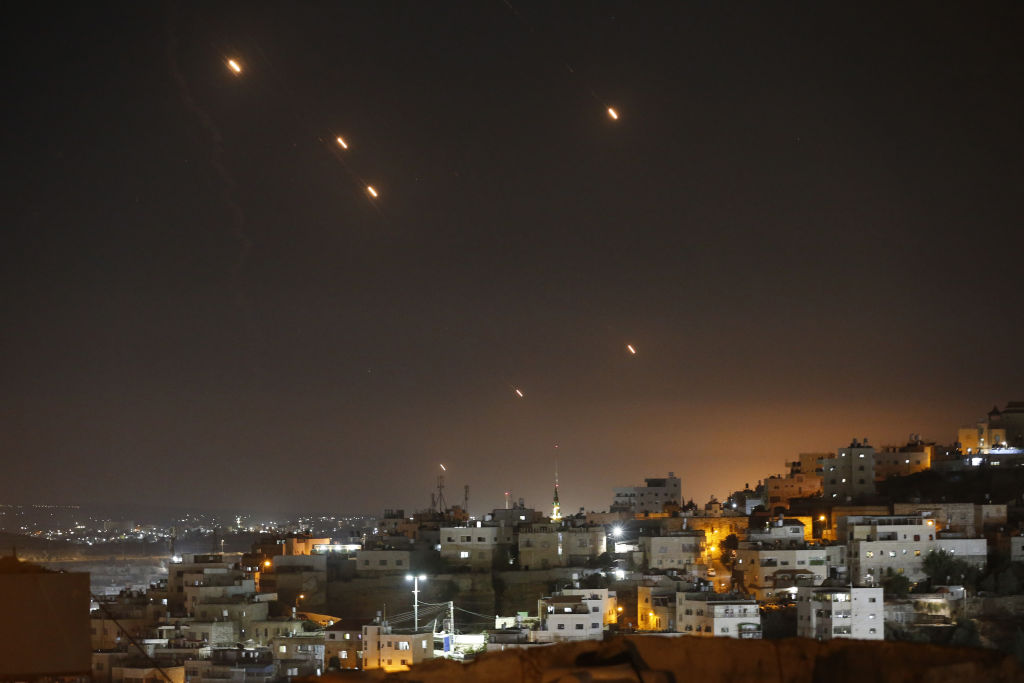Israel struck military sites in Iran on Saturday, saying it was retaliating against Tehran’s missile attack on Israel on Oct. 1, the latest exchange in the escalating conflict between the Middle East rivals.
The Israeli military said it had completed the strikes and achieved its objectives, warning Iran not to respond, while a semi-official Iranian news agency vowed a “proportional reaction” to the Israeli action.
Below is a look at both countries’ air forces and aerial defence systems:
IRAN
The Iranian air force has 37,000 personnel but decades of international sanctions have largely cut off Iran from the latest high-tech military equipment, according to the International Institute for Strategic Studies in London (IISS).
The air force has only a few dozen working strike aircraft, including Russian jets and ageing U.S. models acquired before the country’s 1979 Islamic Revolution.
The Islamic Republic has a squadron of nine F-4 and F-5 fighter jets, one squadron of Russian-made Sukhoi-24 jets, and some MiG-29s, F7 and F14 aircraft, IISS said.
Iran also has pilotless planes designed to fly into targets and explode. Analysts estimate its drone arsenal to be in the low thousands. Further, they say, Iran has more than 3,500 surface-to-surface missiles, some of which carry half-ton warheads. The number capable of reaching Israel may be lower, however.
Iran’s air force commander said in April that the Sukhoi-24s were in their “best state of preparedness” to counter any potential Israeli attack. But Iran’s dependence on Sukhoi-24s, first developed in the 1960s, underscores the relative weakness of its air force.
For defence, Iran relies on a mixture of Russian and domestically produced surface-to-air missile and air defence systems.
Iran received deliveries of the S-300 anti-aircraft system from Russia in 2016 – long-range surface-to-air missiles capable of engaging multiple targets simultaneously, including aircraft and ballistic missiles.
Tehran also has the domestically produced Bavar-373 surface-to-air missile platform, as well as the Sayyad and Raad defence systems.
ISRAEL
Israel has an advanced, U.S.-supplied air force with hundreds of F-15, F-16 and F-35 multipurpose jet fighters. These played a role in shooting down Iranian drones in April when the Islamic Republic launched explosive drones and fired missiles at Israel in its first direct attack on Israeli territory.
The air force lacks long-range bombers, though a smaller fleet of repurposed Boeing 707s serve as refuelling tankers that could enable its fighters to reach Iran for pinpoint sorties.
The Israeli air force demonstrated its ability to hit long range targets in July when its fighter jets struck areas near Yemen’s Hodeidah port in retaliation for a Houthi drone strike in Tel Aviv.
A pioneer in drone technology, Israel has Heron pilotless planes capable of flying for more than 30 hours, enough for far-flung operations. Its Delilah loitering munition has an estimated range of 250 km (155 miles) – far short of the Gulf region where Iran is, though the air force could close the gap by delivering one of the munitions closer to Iran’s border.
Israel is widely believed to have developed long-range surface-to-surface missiles, but neither confirms nor denies this.
A multi-layer aerial defence system developed with U.S. help after the 1991 Gulf War provides Israel with several additional options for shooting down long-range Iranian drones and missiles.
The highest-altitude system is the Arrow-3, which intercepts ballistic missiles in space. An earlier model, the Arrow-2, works at lower altitudes. The mid-range David’s Sling counters ballistic missiles and cruise missiles, while the short-range Iron Dome tackles the kind of rockets and mortars used by Iranian-backed militias in Gaza and Lebanon – but can also, in theory, be fired at any more powerful missiles missed by Arrow or David’s Sling.
The Israeli systems are designed to be patched into counterpart U.S. interceptors in the region for coalition-strength defences.
(Reuters)














